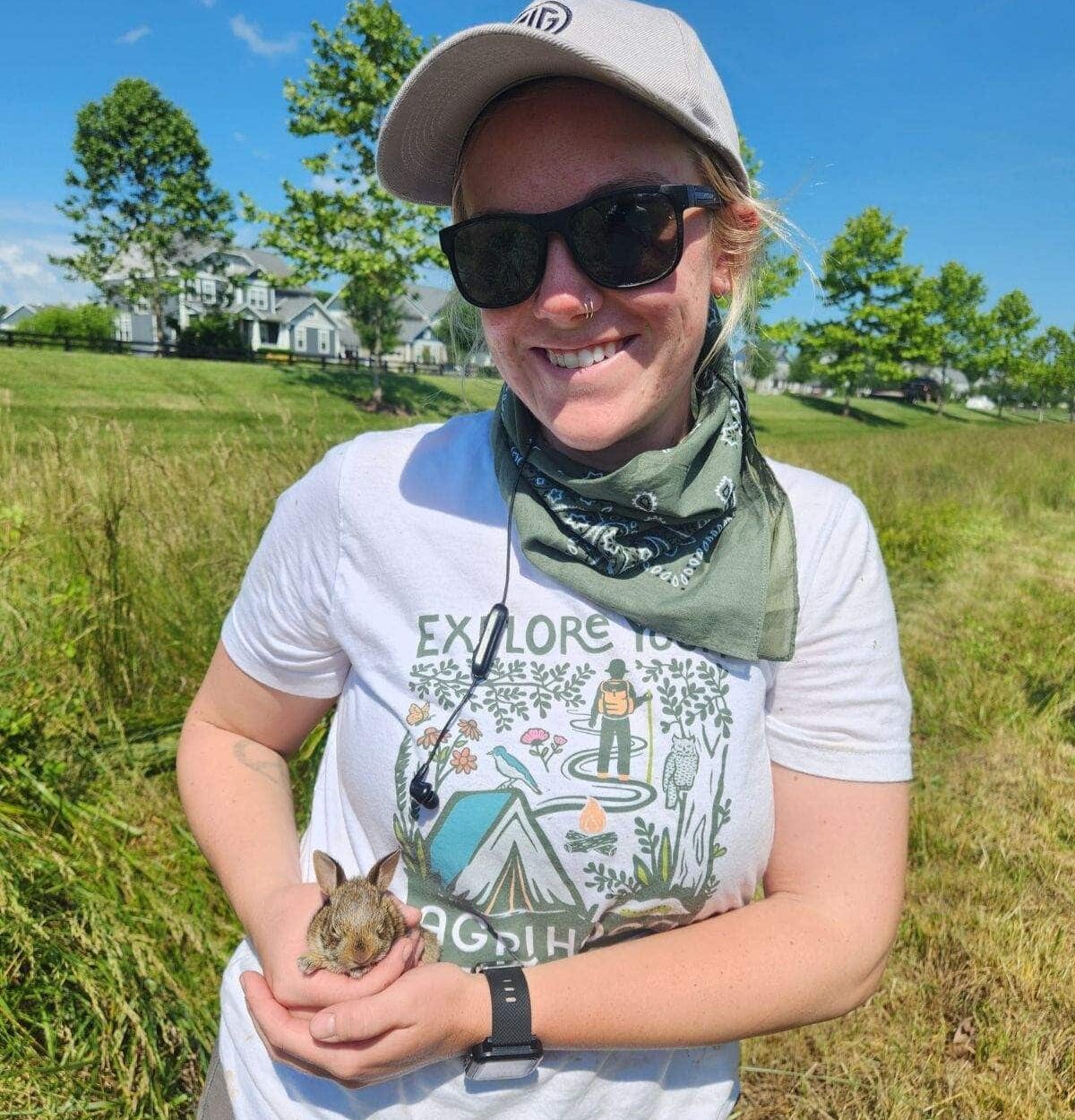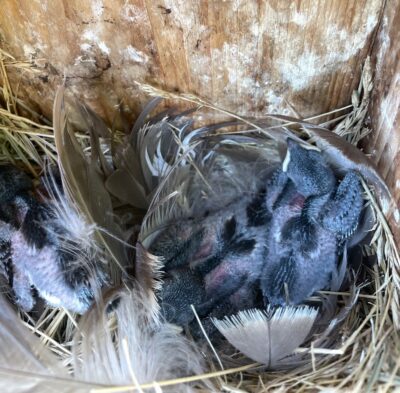
Emily, one of our Rangers, helping a baby cottontail in one of our work areas.
As spring transitions into summer, wildlife across our region are busy raising their young. It’s common during this time to encounter seemingly orphaned or injured animals. However, wildlife parenting is very different that human parenting. Wildlife that may seem in need of help is more often than not, perfectly fine. Unnecessary intervention can often do more harm than good so be sure to take some time to assess the situation before you act.
If you come across a young animal that appears alone, take some time to observe from a distance and assess if it needs help. Don’t forget that humans are scary for animals! While you may not see the parents, they may be nearby waiting for you to leave. Many wildlife parents leave their young alone for extended periods as a natural survival strategy.
Deer will leave their young for up to 24 hours, often just checking on them for brief periods throughout the day before leaving again. During this time, the fawns will stay completely still. While their stillness may seem concerning for us, the fawn is most likely fine and this is the fawn’s best strategy to protect itself from the detection of predators.
It is also common to find birds on the ground near their nests. In these situations, you will need to determine if the bird is a nestling or a fledgling. Fledglings are older, have fully formed feathers (though may still look a bit awkward), and ready to start leaving the nest and learning to fly. It is OK for them to be on the ground (learning to fly is hard!), it’s parents are likely nearby keeping an eye on things. Nestlings are much younger, do not have fully formed feathers, and need help if found outside the nest. Before you do anything, take time to decipher if the bird is a nestling or a fledgling learning to fly. The Audubon Society has a great write up on how to tell the difference here.

These tree swallows are nestlings, you can tell from their lack of fully formed feathers. If found outside of the nest, they need help!
Check out the Virginia DWR’s page here for additional help assessing potential injured or orphaned birds, deer, rabbits, squirrels, and more! One common theme you’ll see among all species? That it is always best to keep wildlife in the wild and reunite them with their parents if possible.
Finding a Rehabber
If you’ve assessed an animal and determine it is truly in need of some human help, contact a licensed rehabber for the next steps. Animals that show obvious signs of injury, should always be assessed by a licensed rehabber. The Virginia Department of Wildlife Resources’ toll-free wildlife conflict helpline at 1-855-571-9003 is available to assist with locating a rehabber 8:00AM-4:30PM, Monday through Friday. Our friends over at Blue Ridge Wildlife Center are also a great resource, or you can find a local rehabber on the Virginia DWR website here!
Remember, do not handle wildlife without the guidance of a professional and without proper PPE for the safety of both you and the animal!
Written by: Sarah Uhrig
